This article is reproduced, with permission, from the Federation of Defense and Corporate Counsel. All rights reserved.
Did the plaintiff's attorn.y realize that he was unleashing the longest running mass tort litigation in U.S. history when he filed the case of Borel v. Fiberboard Paper Products Corporation, 493 F.2d 1060 (5th Cir. 1973)? After the Fifth Circuit affirmed the judgment of $68,000 for Mr. Borel's asbestosis, the rush to file cases was on. In the ten years following that decision, a total of 25,000 cases were filed across the country. That was only the tip of the iceberg as over 730,000 claims would be filed during the pendency of the litigation.
The original lawsuits related to the use of thermal insulation products. Either the plaintiff was an insulator who worked directly with the product or was a shipyard employee who worked in close proximity to those products. The primary defendant in the early cases was Johns- Mansville Sales Corporation which was the largest manufacturer of asbestos-containing products in the world. The remaining defendants were generally manufacturers of similar thermal insulation products. These included such companies as Owens Corning Fiberglass, Owens Illinois, Keene Corporation, Eagle Pitcher Industries, Armstrong and Raybestos Manhattan. The early cases were on behalf of workers who had massive daily exposures to asbestos dust.
Johns-Mansville filed for bankruptcy in August, 1982, and the persona of asbestos litigation was changed forever. Plaintiffs learned how to identify the viable companies that were still remaining. One by one the thermal insulation manufacturers closed their doors or went into bankruptcy.
Many felt that asbestos litigation would die off once the insulators had filed their suits. However, a resourceful plaintiff's bar aggressively screened all construction tradesmen to determine if they had signs of asbestos-related disease. This second wave of asbestos litigation began in the late 1980's and fueled massive filings across the country. Now, the remaining defendants were defending cases brought by plasterers, painters, bricklayers, ironworkers, sheet metal workers, electricians, plumbers and other skilled craftsmen. These workers in many instances never actually worked with thermal insulation but claimed exposure to it from the jobsites where they worked.
Many thought that asbestos litigation would dry up when that group of workers had filed all of its cases. Not so. In 1991, under the auspices of Dr. Irving Selikoff, The New York Academy of Science published "The Third Wave of Asbestos Disease, Exposure to Asbestos in Place Public Health Control," which identified maintenance workers and those who might come in contact with asbestos in place in buildings. Again, the number of claims filed soared. Cases were filed in nearly every state in the United States.
Over the course of the litigation, we have seen the development of plaintiff's attorney's firms that handle only asbestos cases across the country. We have seen a substantial increase in the awards in the cases and the development of an entire asbestos litigation industry.
The economic effects of asbestos litigation have prompted much debate and have caused many defendants to seek salvation from the federal government. Senate Bill 852 – Fairness and Asbestos Injury Resolution Act of 2005 – is still pending before the Senate seeking to create a trust fund to effectively end litigation in the court system.
Many companies now find themselves in the asbestos litigation for the first time. These companies did not manufacture asbestos products and many only used asbestos components based on principals of engineering and design. Still other companies find themselves in the litigation because their product might have been used in conjunction with an asbestos product. If this litigation continues until 2050, as some epidemiologists and authors predict, how are the current defendants and new defendants to manage the litigation effectively?
The purpose of this report is to review where we came from in the asbestos litigation, where we are now and what the future of the litigation might bring. My goal is to help people responsible for managing this litigation assess their litigation plan for the next 40 years.
730,000 individuals had filed a claim for asbestos-related injury by 2002.1 Also, by 2002, 8,400 entities had been named as a defendant in the various suits.2 Gross compensation for plaintiffs totaled approximately $49 billion.3 Defense costs accounted for $21 billion or approximately 31% of the total spending.4 Total spending on asbestos litigation rose to $70 billion by 2002.5 That is a sharp contrast to respected analysts who had predicted a total expenditure of $38 billion for that period.
Jury Verdict Research Reports stated that in the period of time between 1995 and 2005 for all asbestos injury case/trials awards ranged $35,920 to $50 million.6 The award mean was $4,090,869 and the award medium was $1,500,000.7 Fifty-eight percent of all verdicts in asbestos injury litigation exceeded $1 million8A comparison of these results compared with the results of other product liability verdicts can be found in Table 1.
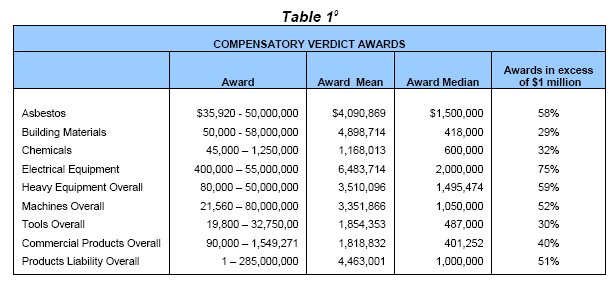
The mean or average verdict for asbestos injury litigation sits at the high end of all product liability injury recoveries. It is clear that awards in excess of $1 million are no longer uncommon. This confirms the conclusion that verdicts in general continue to spiral up.
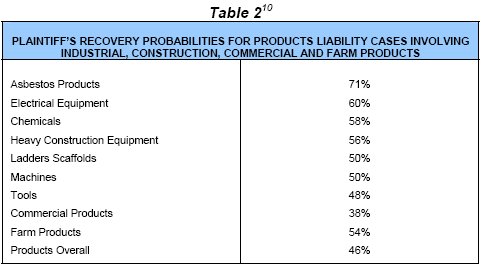
Jury Verdict Research reports that in the period 1995 to 2005 the plaintiff was successful 71% of the time in asbestos injury cases. See Table 2. When you compare that to plaintiffs' recovery probabilities in other suits, you can appreciate the attraction that this litigation presents to the plaintiffs' bar. The Rand 2005 Report further breaks plaintiffs' probability out by injury.
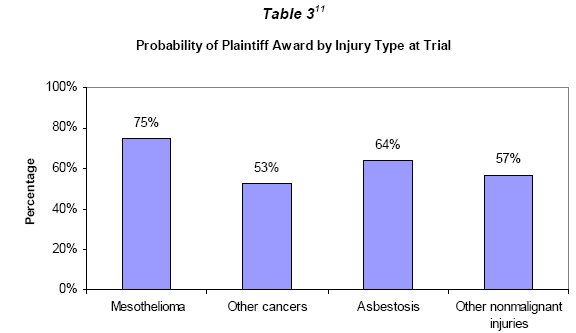
Table 3 demonstrates why mesothelioma cases drive the litigation as 3 out of 4 will result in a plaintiff's verdict.
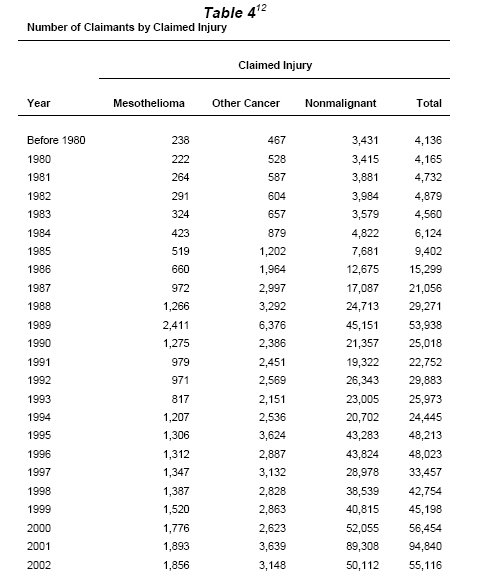
Furthermore, the breakout of the average award shown in Table 5 demonstrates that the average mesothelioma case has a result of $3.8 million.

When one examines the number of mesothelioma cases filed up to 2002 as shown in Table 4 and considers the average award, one is looking at in excess of $7 billion in potential award every year.
Verdicts in all product liability cases continue to rise. The million dollar verdict is no longer an oddity but a norm. Should that be surprising considering how the American public has become accustomed to a million dollars? It is no longer an amount that only a few can appreciate. Approximately 50% of all product liability jury verdicts between 1985 and 2005 resulted in an award in excess of $1 million.14
The average American is assaulted everyday with how much money he or she can win in the lottery. The amount of money you can win is just a ticket away as seen by Table 6.

If a person can win $300 million in the Lotto, is it so hard to imagine that a juror can award $10 million to a poor widow who has seen her husband die from a horribly painful cancer? I have watched jurors intently when a plaintiff's attorney requests $20-30 million in damages during the closing statement. The jurors don't flinch and they are not offended by that amount.
The average total compensation package of a CEO of a Standard and Poors 500 Company as of 2005 was $11.75 million.16 U.S.A. Today routinely reports CEO salaries for major companies. In 2002, they reported a high for the Wells Fargo CEO of $7.9 million to a low for the Coca-Cola CEO of $5.5 million.17 Forbes reports CEO compensation packages showing the top 10 in 2005.18 It reported Yahoo's CEO package was $230.6 million to the low of the Oxidental Petroleum CEO of $64.1 million. That information is gathered by the AFL-CIO and reported to all its members. Putting this information in perspective, if the compensation package of the Coach Purse CEO is shown to be $86.5 million, should not a 60 year old dying of painful peritoneal mesothelioma be entitled to at least $10 million?
Constant media coverage of bad corporate conduct surely has caused an increase in the amounts of awards given by jurors. Profiteering by CEO's as shown in situations such as Enron and the huge profits of the oil industry have left a bad taste in perspective jurors' mouths relating to corporations.
I have conducted numerous mock jury exercises to determine jurors' attitudes regarding corporations. These results are not surprising in today's culture. They clearly indicate the disadvantage any company has in trying a lawsuit against a person with a serious disease such as cancer.
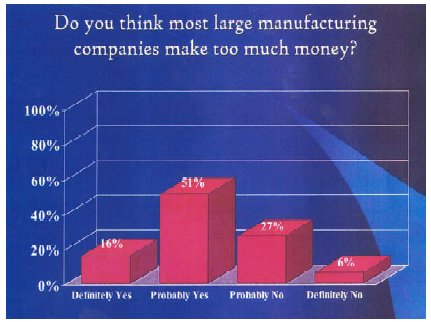
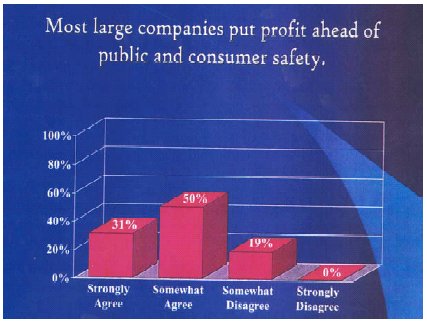
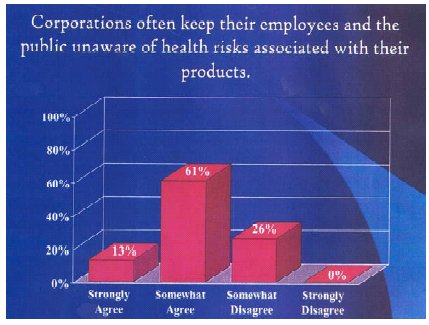
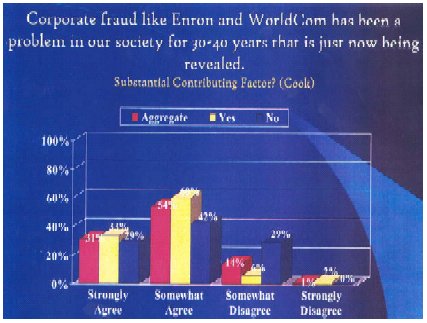
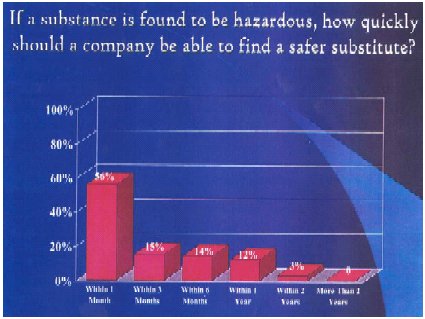
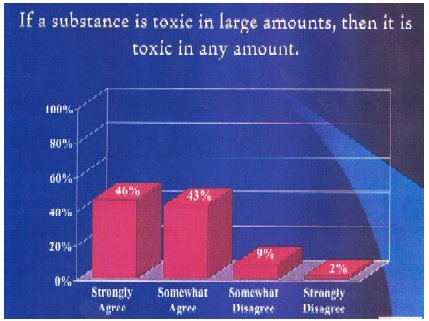
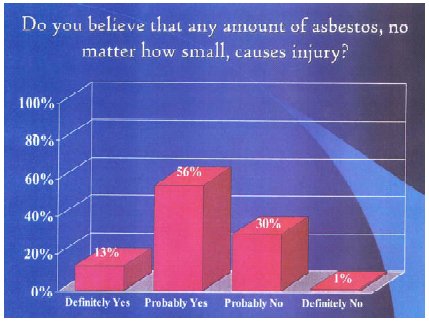
All these factors have influenced jury compensation awards. Even simple injuries can score big dollars as shown in Table 7.

This demonstrates various injuries in product cases from 1995 to 2005 and the percentage of the type of case in relation to all product cases and the award medium. You can see in comparing these results to the asbestos injury result how much more valuable asbestos cases are in relation to all other products cases.
Effects Of Aging Jury Pool
As time marches on, the ability to convince jurors of certain defenses in asbestos litigation will diminish. The defense in every case relies in whole or in part on the concept of the "state-of-the-art", that is, what was known or what was not known at any given point in time relating to the dangers of asbestos. The success of that defense relies on jurors accepting that asbestos was considered safe and a benefit to man at one time.
When the litigation started in the 1970's, a 50 year old juror at that time would have remembered how asbestos was considered "the magic mineral". Those jurors remembered how asbestos was used in everything from ironing board cover pads to barbecue mitts. Many remembered how asbestos was a strategic material used in the war. Those jurors understood that asbestos was not always considered a hazardous substance.
What has happened to those jurors? If you were 50 in 1979, you are 78 in 2007. Not many 78 year olds are being called for jury service and if one or two slip through, they are usually excused for medical reasons. The best candidates for jury service who would have knowledge of the history of asbestos are approaching a point where they are too old for jury service as seen in Table 8.
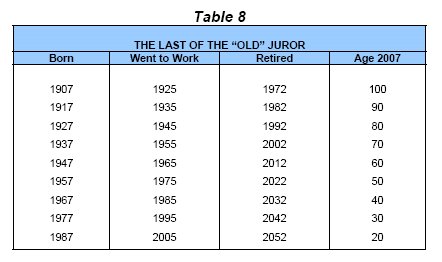
The first emergency OSHA regulation relating to asbestos became effective in 1971. The standard assumes that asbestos is a hazardous substance that can cause injury. Since 1971, every American has been protected by the OSHA asbestos standards. For the past 36 years asbestos has been portrayed in these standards as bad. Consider how this view of asbestos fits into the mind of prospective jurors even before they are called for service.
If you were born in 1953, you are now 54 years old. If you went to work at age 18, you entered the workforce in 1971. That means that your entire work life of 36 years has been regulated by OSHA. During that period of time, asbestos has been considered a health hazard. You have never heard anything good about asbestos and in the 1980's you probably heard the scary stories of asbestos in schools. In fact, you were in your 30's and probably had children in school when the health hazards of asbestos were considered a serious threat for school children.
Any juror younger than 54 carries this baggage and will start out in any asbestos case with the belief that everyone knew asbestos is a substance that is bad and causes injury. Consider how this group born in 1953 will age over the next 4 decades of asbestos litigation.
Within the next 20 years, every potential juror will start out with the knowledge that asbestos causes injury. If plaintiffs win 3 out of 4 cases now, the changing demographics of the jury pool might push those odds even higher in plaintiffs' favor.
The Litigation Continues
Cases continue to be filed in jurisdictions identified by plaintiffs' counsel as favorable. These jurisdictions can be found in California, Florida, Illinois, Maryland, Mississippi, New Jersey, New York, Ohio, Pennsylvania, Texas and West Virginia.20
Trials going to verdict are again on the rise. Table 9 shows that defendants continue to litigate these cases in the face of the overwhelming odds in plaintiffs' favor. Nearly one-half of all cases tried involve a claim for cancer (see Table 10).
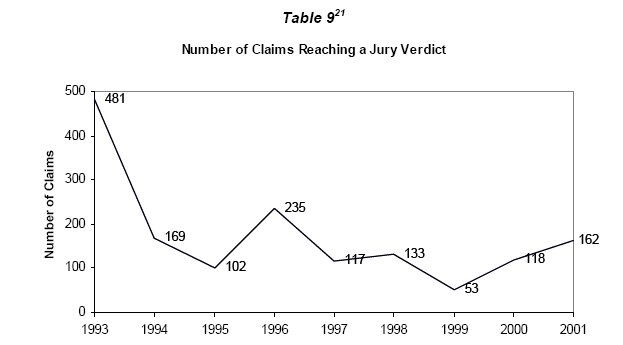
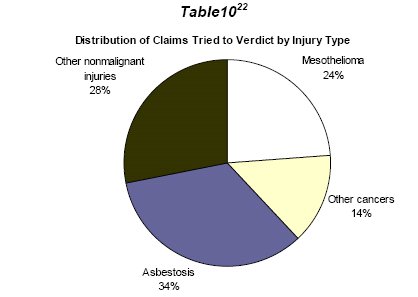
Many of the new defendants to the litigation have taken aggressive stands regarding claims against their products. Many of these defendants incorporated an asbestos-containing product into their finished product (i.e., a valve company that used an asbestos-containing gasket). These defendants contend that exposure to asbestos is insufficient to cause disease (low dose defense) or that the fiber type used was incapable of causing mesothelioma (chrysotile fiber type defense). Their success for the long term remains to be seen.
Seventy-three corporate asbestos defendants have either dissolved or filed for bankruptcy protection under Chapter 11 as of December of 2004.23 Since 2000, as many bankruptcies of companies manufacturing asbestos products have been filed as had been at any time before that.24 Many of the current defendants were distributors of products manufactured by the bankrupted companies or many current defendants incorporated the bankrupt's finished products into their own. In most jurisdictions, these new defendants walk into the shoes of the bankrupt and end up assuming the responsibility for the bankrupt's products and, to make matters worse, are unable to recover indemnity from the product manufacturer.
Gazing Into The Future
What's past is prologue. What can we expect to happen from here until asbestos litigation runs it course? How you will manage your litigation over the next 30 years (assuming the litigation last that long) requires understanding of the predictions regarding injury trends.
Mesothelioma will continue to drive the litigation. Today, we see more plaintiffs' attorney's firms becoming mesothelioma boutiques, that is, firms handling only mesothelioma cases and refusing pleural changes or asbestosis cases. Many studies, such as Rand, rely on the estimates prepared by Nicholson, et al. (1982).25 Their prediction seems to be fairly accurate as we review what has actually happened in the last 20 years. This prediction assumes:
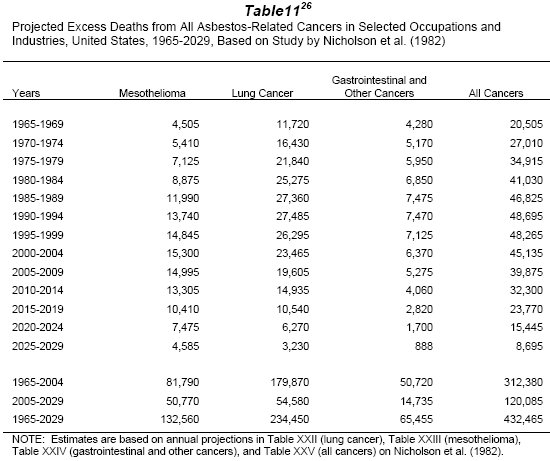
For the period of time between 2005 and 2009, under Nicholson's prediction, one would expect to see 2,999 mesothelioma cases per year. Assuming verdicts continue to rise, the average/mean verdict could be as high as $4 million. That would generate approximately $11.9 billion in potential verdicts in each of those years.
All predictions accept the fact that the number of mesothelioma cases will begin to decline resulting from asbestos regulations that went into effect in the early '70's and the discontinuation of the use of asbestos over the years.
Between 1910 and 2014 under Nicholson's theory, it is predicted that there will be approximately 2,600 cases of mesothelioma per year. If you assume an average verdict of $4 million, you are looking at a potential verdict pool of over $10 billion a year.
Between 2015 and 2019 under Nicholson's theory, one would see an average of 2,082 cases per year with a yearly verdict pool potential of slightly over $8 billion.
Between 2020 and 2024, it is predicted that there would be 1,495 cases per year with a jury verdict pool potential of just under $6 billion.
Between 2025 and 2029, the number of cases will fall to 917 per year with a jury verdict pool potential of just over $3.5 billion.
Some authors and defendants contend that the Nicholson estimates are high and the actual number of mesothelioma cases will be much lower. Many rely on Price and Ware to project a lower number of cases running out through 2049 as shown in
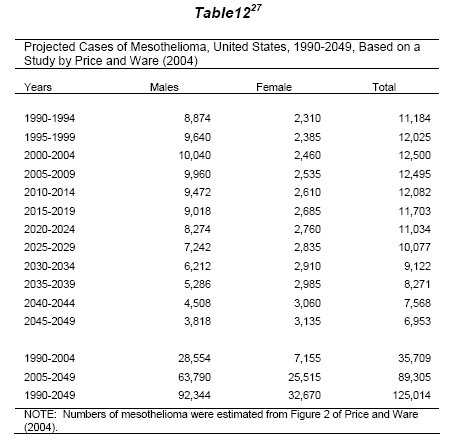
The Bates White Report prepared in opposition to the proposed federal legislation predicts that the peak number of mesothelioma injuries occurred between 1995 and 2000 topping out at approximately 2,750 per year.28 They predict that by 2010, the number will be 2,250; less than 1,500 in 2020; less than 500 in 2030 and return to near baseline by 2050.
Nicholson, et al., predicted that between 2005 and 2029, there would be 50,770 mesothelioma cases.29 You will note that that does not run out the string of cases as attempted by other authors. Price, et al., predicted 89,305 cases from 2005 through 205030 and the Bates Report predicts 49,000 cases through 2049.31 Clearly, all three prognosticators would agree that there will be a substantial number of cases through 2050 to be litigated.
Evaluating Your Defense
Considering there are billions of dollars at stake and the actual existence of many companies becomes an issue, how are you going to manage the litigation in an era of dwindling insurance coverage and self-insured status? The litigation will not go away and requires an educated assessment of each potential defendant's situation. Hard questions must be asked about the management of the litigation. With that in mind, I pose a number of questions that every claims supervisor or manager must ask to ensure that they have set up an effective system to manage the litigation.
First, you must determine if there is a legitimate defense to any asbestos injury relating the product you sold. Is there a low dose defense? Was the asbestos bound, encapsulated or isolated in the product so that exposure, if any, would be minimal? Is the nature of the exposure short, intermittent or long term? What is the time and motion characteristics of working with the product during potential exposure? If exposure is low and the duration of exposure is short, you are in a position to put on a legitimate scientific defense.
Are there circumstances that indicate you will have trouble putting on a defense? Do you have bad documents that could give rise to punitive damages? Do you have documents that indicate that your company was aware of the risks of asbestos exposure with the product and did nothing (not even a warning) to prevent potential injury? Did you use a bad fiber (amphibole) associated with mesothelioma?
Have you coordinated your discovery response process? Do you have answers to interrogatories filed in jurisdictions across the country that conflict with each other? Has your document production been inconsistent or spotty?
Do you have a coordinated defense strategy for the attorneys handling your cases? Is every attorney pursuing the defense strategy in such a manner that the plaintiffs' attorneys will not be able to make claims based on the inconsistencies of approach? Do you have a National Coordinating Counsel for the purpose of coordinating and streamlining?
Do you have an expert team in place? Have they prepared studies that prove your theory? Are the experts jury friendly? What is their trial availability considering they might be needed to testify in multiple cases on a monthly basis?
Do you have a strategy for handling or countering the plaintiffs' experts? Do you have an expert database where you track everything those experts might have said about asbestos science in general or your product in particular? Do you have a trial strategy to be employed with each expert? Is that strategy being coordinated by the National Coordinating Counsel?
Do you have a trial team or trial teams? What is each team member's experience and knowledge regarding the science of asbestos? Do plaintiffs' attorneys respect your trial team? How will your trial team play in all jurisdictions? Do you have a sufficient number of members for the trial team to handle multiple trials should that be necessary?
Does you local counsel have experience and background in handling asbestos litigation? Are they well situated with the local court? Can they abide by the limitations and rules given to them by National Coordinating Counsel? Can they report properly and promptly?
Do you have a person in-house that is dedicated to the defense? Does that person have the knowledge and experience of asbestos science to have meaningful discussion with National Coordinating Counsel and insurance carriers? Does that person have the ability to track all of the data for evaluation of your asbestos program's success? Is this person a good claims handler?
Due to the sheer volume of cases, it is clear that you cannot try every case. Do you have a settlement strategy or settlement plan to dispose of the vast majority of the cases? This settlement plan must include a strategy for minimizing your risk and controlling your transaction costs. Do you have a method to identify the cases that need to be settled in their early stages as opposed to working the case up in its entirety and then attempting to settle?
Who is controlling your litigation? Is it you or your insurance carrier? Is your litigation being handled in such a manner to maximize your coverage so that it will last as long as possible? If the answer to that question is no, then you must determine what needs to be done to change that situation as soon as possible. That might require separate coverage counsel to deal with your carrier. Is the insurance carrier keeping you advised of everything that is going on in the litigation? Is a good database being maintained to track all cases from cradle to grave? It is essential that the database be maintained even if a carrier is controlling the litigation. If and when they exhaust, you will need that information to manage your docket.
Finally, do you have an overall plan for the management of the litigation for the next 40 years? More importantly, is your management committed to the plan and are the carriers committed to that plan so that everyone is working towards the same goal?
The risks of financial disaster are real if you put your head in the sand and believe that the litigation will end or will not affect your company's bottom line. The money you spend today to put a litigation plan into effect will save you millions and possibly the existence of your company over the next 30 years. Asbestos litigation will not end any time soon. Verdicts will continue to escalate and plaintiffs will continue to win 3 out of 4 cases. The only alternative to a solid litigation management plan is bankruptcy which is a real threat in this litigation. If you do not have someone to help you through the minefields of this litigation, hire someone today who can face these issues with you head-on and make the choices that you need to save your company's financial assets.
Edward J. McCambridge is a founding shareholder of Segal McCambridge Singer & Mahoney, Ltd. Since receiving his Juris Doctor in 1975, he has concentrated his trial practice in the areas of Toxic Tort and Products Liability Litigation. He is a member of the bar in Illinois, Michigan and numerous federal districts. He has been admitted to try cases across the United States. He was the original President and Founder of the Chicago Area Asbestos Defense Group and has been involved in asbestos litigation for 30 years. He has presented numerous lectures on asbestos litigation and has been Program Chairman of Mealey's Asbestos Litigation Seminars. He also sits on Mealey's Toxic Tort Advisory Counsel. He is a member of the Defense Research Institute and the Illinois and Michigan Bar Associations. He has been listed as an Illinois Super Lawyer for the past three years. He has acted as counsel for the defense in mock trials for the American Industrial Hygiene Association and he has taught courses in trial advocacy.
Footnotes
1 Rand Institute for Civic Justice, Asbestos Litigation, 2005, p. XXIV
2 Rand Ibid., p. XXV.
3 Rand Ibid., p. XXVI.
4 Rand Ibid. p. XXVI.
5 Rand Ibid., p. XXVI.
6 LRP Publications, "Product Liability Claims: An Overview of Jury Awards and Settlements," 2005, p. 6.
7 LRP Publications Ibid., p. 6.
8 LRP Publications Ibid., p. 6.
9LRP Publications Ibid., pp. 6-7.
10 LRP Publication Ibid., p. 3. 11 Rand Ibid., p. L
II (3.7).
12 Rand Ibid., p. LIII (3.9).
13 Rand Ibid., p. LXXI (4.1).
14 LRP Publications Ibid., p. 9.
15 Powerball and Mega Millions Websites, August 2006.
16 U.S.A. Today, May 20, 2005.
17 U.S.A. Today, May 20, 2005.
18 Forbes Website 2005 Compensation Packages.
19LRP Publications Ibid., p. 9.
20 Rand Ibid., p. LXII.
21 Rand Ibid., p. 50, F163.4.
22 Rand Ibid., p. L, F163.5.
23 Rand Ibid., p. CIX.
24 Rand Ibid., p. CIX.
25 Rand Ibid., p. XVI.
26Rand, Ibid., p. XVI. 2
7Rand, Ibid., p. XVIII.
28 Bates-White, "Financial Analysis of S.852 – Fairness in Asbestos Injury Resolution Act of 2005", October 17, 2005, p. 46.
29 Rand Ibid., p. XVI.
30 Rand Ibid., p. XVIII
31 Bates-White Ibid., p. 32.
The content of this article is intended to provide a general guide to the subject matter. Specialist advice should be sought about your specific circumstances.

